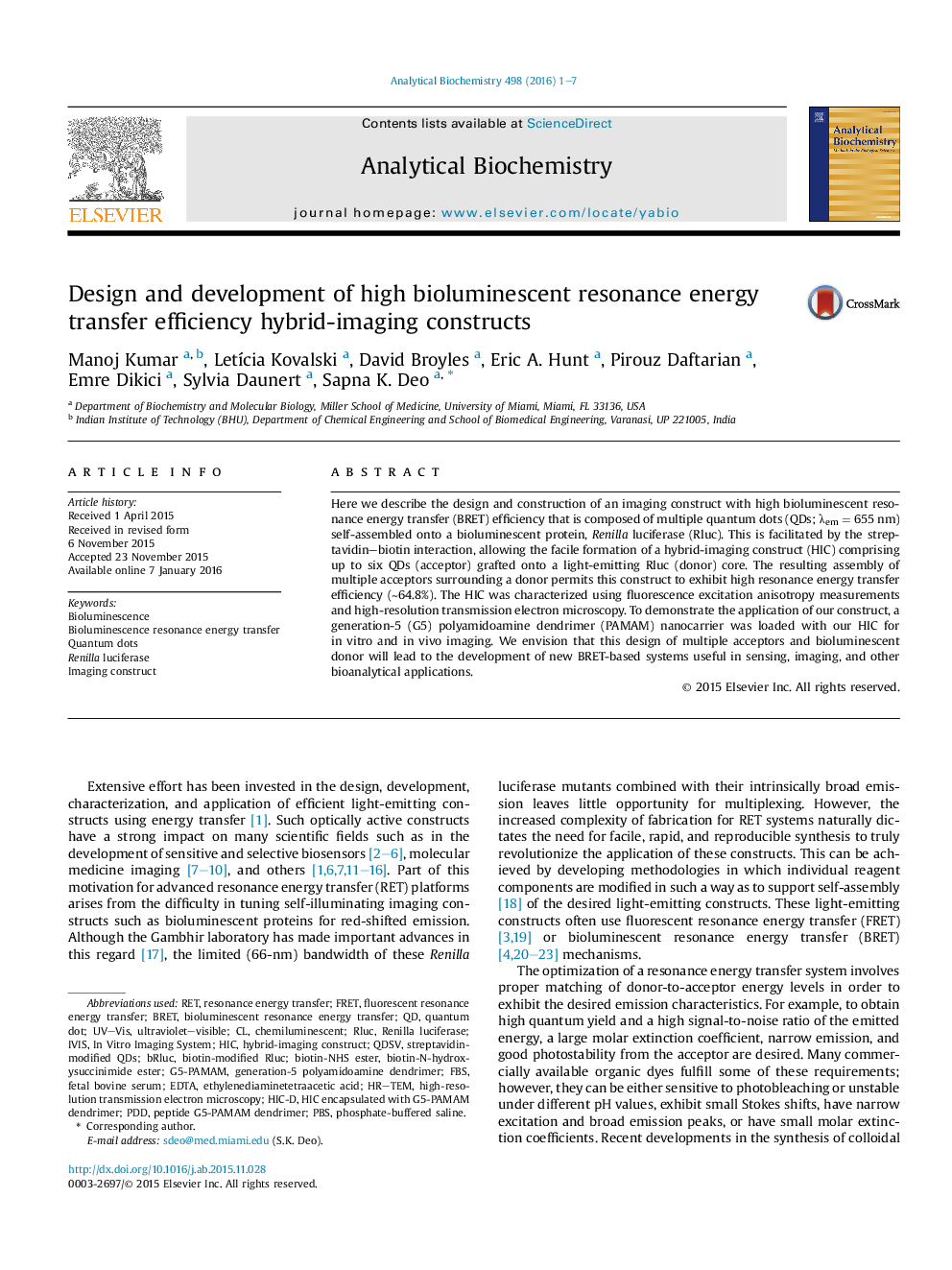| Article ID | Journal | Published Year | Pages | File Type |
|---|---|---|---|---|
| 1172985 | Analytical Biochemistry | 2016 | 7 Pages |
Here we describe the design and construction of an imaging construct with high bioluminescent resonance energy transfer (BRET) efficiency that is composed of multiple quantum dots (QDs; λem = 655 nm) self-assembled onto a bioluminescent protein, Renilla luciferase (Rluc). This is facilitated by the streptavidin–biotin interaction, allowing the facile formation of a hybrid-imaging construct (HIC) comprising up to six QDs (acceptor) grafted onto a light-emitting Rluc (donor) core. The resulting assembly of multiple acceptors surrounding a donor permits this construct to exhibit high resonance energy transfer efficiency (∼64.8%). The HIC was characterized using fluorescence excitation anisotropy measurements and high-resolution transmission electron microscopy. To demonstrate the application of our construct, a generation-5 (G5) polyamidoamine dendrimer (PAMAM) nanocarrier was loaded with our HIC for in vitro and in vivo imaging. We envision that this design of multiple acceptors and bioluminescent donor will lead to the development of new BRET-based systems useful in sensing, imaging, and other bioanalytical applications.
